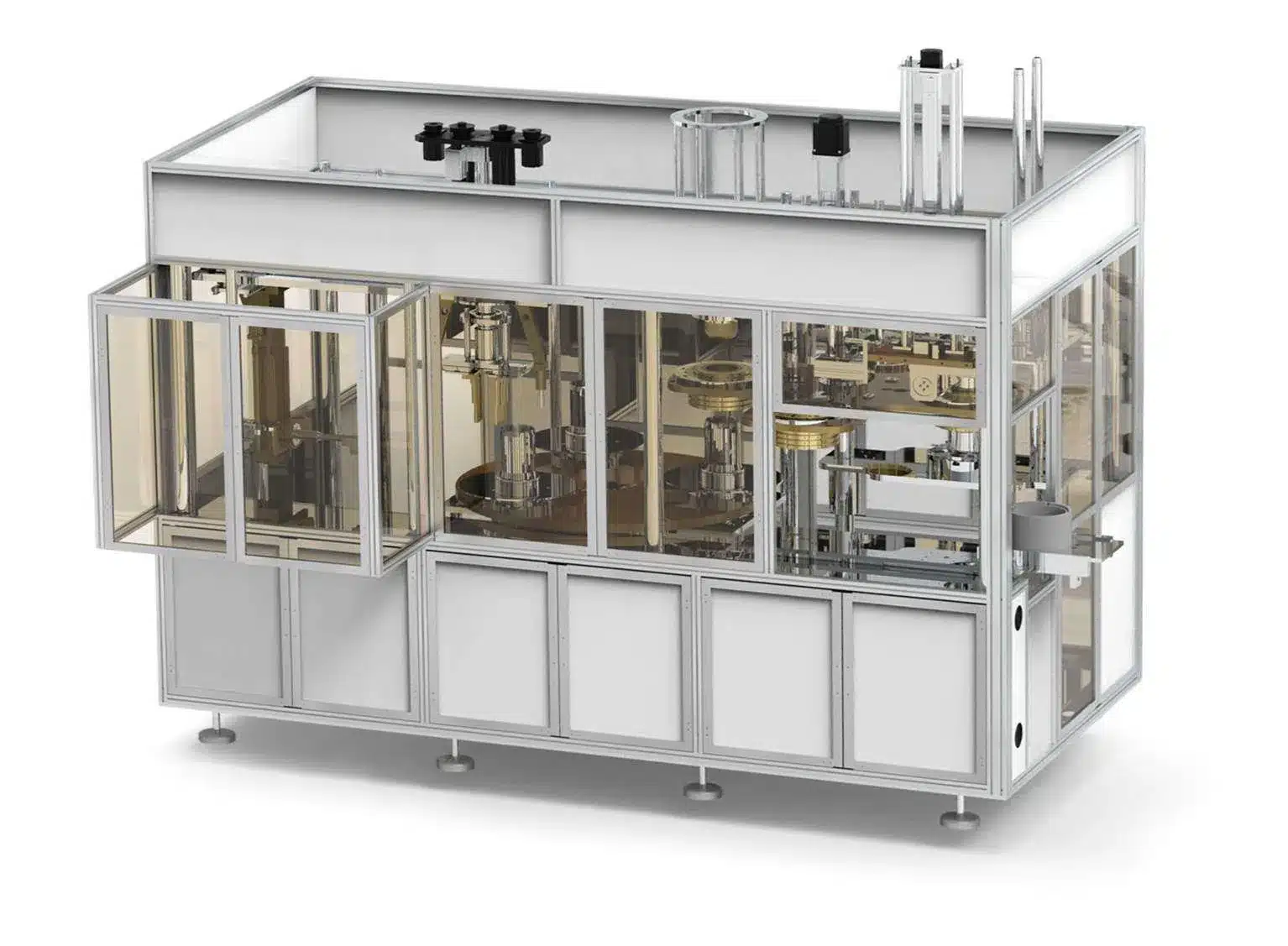Besides manual operation, rotor and stator assembly now largely utilizes automated equipment and production lines. This not only improves production efficiency but also ensures better assembly consistency. So how can automated rotor and stator assembly lines reduce costs and increase efficiency? What are some common methods? Vacuz will give you a brief introduction below!

I. Efficiency Improvement Strategies
1. Equipment Automation Upgrade
Multi-station parallel operation: Utilizing rotary/linear multi-station turntables to simultaneously complete core insertion, winding, welding, and other processes. For example, a 6-station design can shorten the single-piece cycle time by 42%, significantly improving production efficiency.
High-speed motion control: Servo motors paired with high-precision encoders achieve high-speed positioning (speed increased by 50%), and pneumatic-hydraulic booster cylinders shorten pressing time to 1.2 seconds/cycle, reducing time consumption in single steps.
Flexible design: Modular tooling fixtures support rapid changeover within 10 minutes, adapting to the needs of multi-variety production and avoiding downtime losses due to product switching.
2. Process Optimization and Collaboration
Process reengineering: Eliminating redundant steps and converting serial processes into parallel processes. For example, welding and balancing are performed simultaneously, shortening the overall process time.
Intelligent Scheduling: The MES system dynamically adjusts production plans, reducing equipment idle time and material waiting time, and improving resource utilization.
AGV/RGV Delivery: Automated guided vehicles reduce material handling time from 20 minutes to 5 minutes per trip, lowering logistics costs.
3. Technology Integration and Innovation
Machine Vision and Sensor Applications: High-speed cameras detect defects such as windings and welds, with a defect recognition rate ≥99.5%; force control sensors control pressing force at 500±20N, preventing core deformation or loosening.
Dynamic Balancing Correction: Automatic weight-reducing machines control residual imbalance to ≤2g·cm, reducing subsequent debugging time.
Virtual Debugging: A digital model of the production line is built in the Manufacturing Execution System to verify process parameters in advance, reducing trial-and-error costs in actual production.
II. Cost Control Measures
1. Supply Chain and Material Management
Centralized Procurement: Long-term agreements reduce raw material costs by 8%-12%; VMI model increases inventory turnover by 30%, reducing capital occupation. 1. **Surplus Material Recycling:** Measures such as reusing short thread ends reduce waste and lower raw material loss rates.
**Energy Saving Retrofit:** IE4/IE5 motors paired with frequency converters save 15%-20% on electricity, reducing compressed air leakage rate from 25% to 5%, thus lowering energy costs.
2. **Equipment Maintenance and Prevention:**
**TPM (Total Productive Maintenance):** Daily cleaning and regular lubrication reduce the failure rate from 5% to 1%, extending equipment lifespan.
**Predictive Maintenance:** Vibration/temperature sensors provide early warning of malfunctions, allowing intervention 72 hours in advance and reducing unplanned downtime.
3. **Human Resource Optimization and Training:**
**Multi-Skilled Worker Development:** Automation reduces manpower to 8 people per line. Training employees in multiple skills (such as operation, maintenance, and debugging) increases per capita output.
**Lean Culture Implementation:** Continuously optimizing process parameters and error-proofing measures leads to continuous improvement of production processes.
III. **Quality Assurance and Cost Reduction Linkage:**
1. **Quality Traceability System:** Analyzing the root causes of defects increases the yield rate from 95% to 99%, reducing rework and scrap costs.
2. Process Database: Records parameters such as winding tension and welding temperature to form standard operating procedures (SOPs), reducing quality fluctuations caused by human error.
3. Monitoring: Provides real-time warnings of parameter fluctuations, intervenes in anomalies in advance, and avoids the generation of batch defective products.

How to reduce costs and increase efficiency in automatic rotor and stator assembly lines? What are some common methods? Vacuz has provided a simple explanation above, and we hope this information is helpful!
